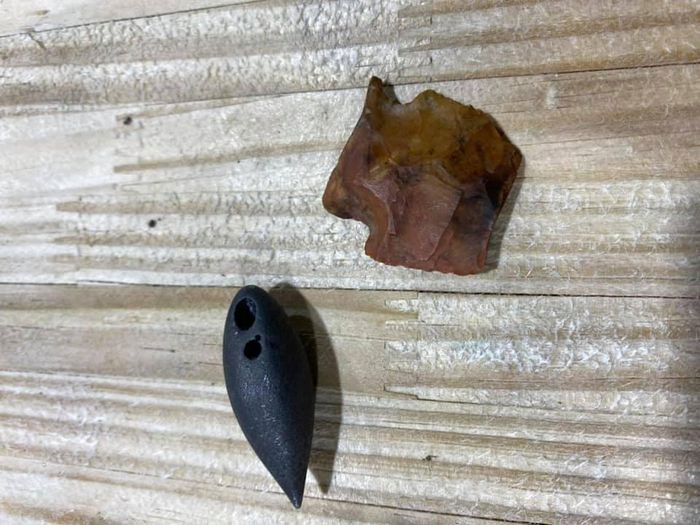A wildlife researcher in Mississippi has identified two artifacts dating back 4,000 and 6,000 years found in the stomach of a captured alligator on September 2.
Shane Smith, a deer processor at Red Antler Processing, examined the stomach of a 4-meter-long alligator after hearing about a professor in South Carolina discovering unusual objects in another alligator’s belly. Smith was surprised to find a arrowhead and a sinker.

Two ancient artifacts found in the stomach of an alligator. (Photo: Red Antler Processing)
Initially, he thought the alligator might have eaten an arrow shot at it, but the sinker could have been ingested while the alligator was feeding. A geologist in the state examined the arrowhead and determined it dates back 5,000 to 6,000 years.
James Starnes, director of the Geological and Surface Mapping Office of the Mississippi Environmental Quality Agency, discovered that the arrowhead is actually an ancient weapon used for launching spears. Meanwhile, the sinker, a stone used in fishing to weigh down nets, is approximately 4,000 years old. This object was carved from hematite. Starnes is not entirely sure if it is indeed a sinker, although its teardrop shape suggests that it is a fitting hypothesis.
According to Science, scientists have long believed that, like birds, alligators swallow stones to help digest hard-to-process meals such as bones or those inadvertently swallowed while consuming live prey. This stone swallowing strategy may also help this wild creature maximize its time underwater.
The American alligator (Alligator mississippiensis) is the only native reptile in the southeastern United States. Adult alligators measure between 2.5 to 3.4 meters and weigh between 76 to 363 kilograms. They typically inhabit ponds, rivers, and swamps. With an extremely powerful bite, the American alligator is considered a top predator in its habitat. Its diet includes invertebrates, birds, fish, turtles, snakes, amphibians, and mammals.


















































